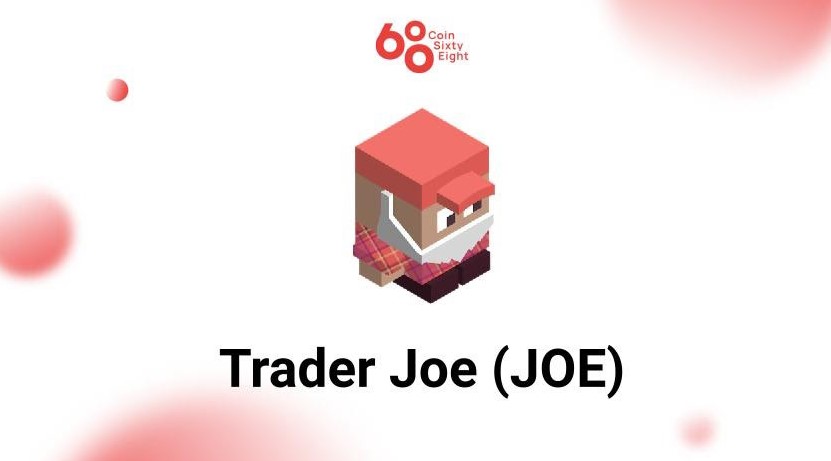
Trader Joe (JOE) is a community-focused, highly-competitive DEX (decentralized exchange). The platform offers users a variety of advanced features including leveraged trading and P2P lending services. Trader Joe was the first and remains the largest DEX in operation on the Avalanche blockchain.
The protocol has leveraged its first mover positioning to improve adoption. Currently, the protocol lists +110,000 users and continues to see its user count rise. The network has expanded its trading pairs recently, now supporting over 65 in total. Here are some of the reasons why so many Avalanche token traders have found a new home using this DEX.
What Problems Does Trader Joe Attempt to Fix?
Trader Joe wants to solve one of the biggest issues facing new traders – confusion. The DEX sector is different than CEX trading in many ways. The terminology and requirements are different, often causing new traders to feel overwhelmed. Trader Joe attempts to rectify this problem in multiple ways.

For one, the platform emphasizes education. There are detailed guides and videos to teach new traders. Additionally, the network was designed from the ground up to be user-friendly, with everything needed only ever a few clicks away. Finally, the DEX features a combination of features that make it the ideal one-stop-shop for decentralized finance.
Capital Inefficiencies
Another issue that the DEX seeks to reduce is its capital inefficiencies. The compartmentalized nature of the market means that traders must leverage multiple networks to accomplish tasks. This approach adds delays, fees, and requires more technical skills. Trader Joe introduces new methods that streamline the conversion of cryptos into other tokens or fiat currency.
Rising Transaction Fee
Beyond capital inefficiencies, a major concern for developers is the rising gas fees found on most networks today. Ethereum in particular has fees so high at times that developers are often eager to find alternatives. These fees are the result of congestion and the PoW (proof-of-work) consensus algorithm the network uses at time of writing.
Trader Joe provides super low gas fees and critical scalability thanks to its technical structure. These lower fees help traders to secure higher ROIs and reduce overhead. For those day trading, these fees can make a massive difference in their final results for the day.
Benefits of Trader Joe
It’s easy to see the many benefits that the platform brings to the market. DEXs can be a better alternative for multiple reasons. For one, it doesn’t make sense to have decentralized cryptocurrencies using centralized exchanges because it creates choke points in the market.
A better alternative is to leverage a DEX to eliminate the influence and power these groups have obtained over the last decade. DEXs like Trader Joe provide noncustodial services to users – meaning that your crypto remains safely in your possession until the point you trade. This strategy is safer because it prevents delays due to maintenance, upgrades, or hacks.
Secured
Trader Joe keeps security as a primary concern. The network features an open source protocol which makes it safer than most CEXs in general. Notably, it was audited by two well-known security firms, HashEx and Paladin.
In today’s digital economy, speed is critical. The DEX enables users to execute trades in near real-time. The system provides direct p2p trading services and more. This approach ensures that you can remain ahead of trends and never miss a trading opportunity due to network delays.
How Does Trader Joe Work?
The network is unique in many ways. For one, it operates on the ultra-high-speed Avalanche blockchain. Avalanche is growing in popularity due to its low fees and advanced programmability. The network leverages three separate blockchains to streamline onboarding, validation, and Dapp support. It leverages these features to provide swapping and trading services securely.
Zap
Zap is one of the premier features on the DEX. The protocol enables users to swap tokens for a liquidity provider token (LP token) in a seamless manner. This feature is ideal because it enables users to pay a single transaction rather than multiple, which is usually the case.
Swap
The Swap feature is used to trade tokens between users. The system includes a handful of helpful tools and features. There are candlestick charts and other charting tools to help you monitor the market’s movements in real-time. The Swap feature provides lower rates than CEXs and is non-custodial which improves security.
P2P Lending
The BankerJoe feature is a p2p lending system. Users can secure APYs for providing liquidity to the platform’s lending pool. Borrowers can then access these funds, paying interest upon repayment. The advantage of this approach is the lending pool gains interest which makes it better prepared to cover defaults.
Leverage
Trading professionals can access leveraged trading to improve their ROIs. Leverage trading is best kept for experienced traders as the potential for higher profits is accompanied by greatly increased risk exposure. Trader Joe supports multiple levels of leverage which makes it ideal for institutional traders seeking a secure and low-cost DEX.
Staking and Farming Pools
Trader joe supports both staking and farming pools. These features are very similar in that you need to provide liquidity to a smart contract to secure returns. However, staking has a lock-up period and present ROI whereas farming varies daily with no lockup.
Token
JOE is the main utility token for the Avalanche (ARC-20) network. The token is used to send value, pay fees, and access the features of the network. You can stake and farm JOE to secure passive returns. The token operates as the primary rewards token as well.
Bottom Line
Trader Joe has the right combination of features to drive users to the platform. The system includes a familiar look that resembles a CEX which also improves the onboarding process further. This DEX is set up to be a popular option for Avalanche network traders as it’s both secure, responsive, and open to everyone. As such you can expect to hear a lot more from Trader Joe in the coming months.


















